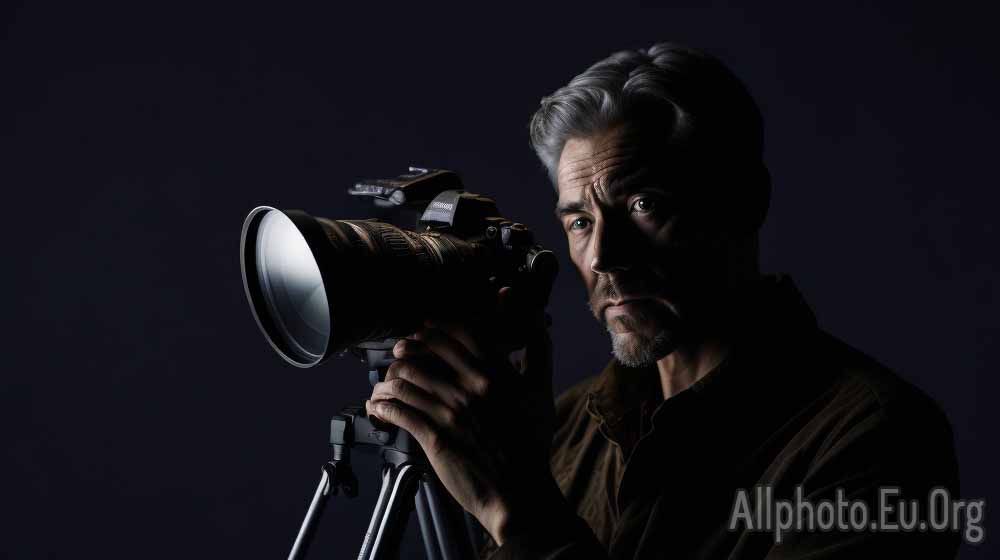The Art of Storytelling Through Photography: How to Convey Emotion and Meaning

Photography is more than just capturing an image. It's about telling a story, conveying emotion, and capturing the essence of a moment. The art of storytelling through photography is a powerful tool that can connect you with your audience and evoke a range of emotions. Whether you're a professional photographer or an amateur, there are certain techniques and approaches that can help you tell a story through your photos.
In this article, we will explore the art of storytelling through photography and how to convey emotion and meaning through your images.
Understanding the Power of Photography
Photography is a powerful tool that can capture and convey emotions in a way that words often cannot. A single photograph can tell a thousand words, evoke a range of emotions, and connect with the viewer on a deep level. As a photographer, it's important to understand the power of your images and how to use them to convey meaning and emotion.
The first step in mastering the art of storytelling through photography is to understand the elements that make a great photograph. These include composition, lighting, color, and subject matter. By mastering these elements, you can create images that are not only visually stunning but also emotionally compelling.
Composition
Composition is the arrangement of elements within a photograph. A well-composed photograph can draw the viewer's eye to a particular subject, convey a sense of balance and harmony, and create a visual story. To create a well-composed photograph, consider the placement of your subject, the use of negative space, and the framing of the shot.
Lighting
Lighting is one of the most important elements in photography. The use of light can create mood, depth, and texture in an image. The direction, quality, and intensity of light can all affect the emotional impact of a photograph. As a photographer, it's important to pay attention to the lighting and use it to enhance the mood and emotion of your images.
Color
Color can also play a significant role in the emotional impact of a photograph. The use of color can convey a range of emotions, from warmth and happiness to sadness and melancholy. By paying attention to the colors in your photographs, you can create images that convey a particular emotion or mood.
Subject Matter
The subject matter of a photograph is also an important element in storytelling through photography. Whether it's a person, a landscape, or an object, the subject of a photograph can evoke a range of emotions and tell a story. As a photographer, it's important to choose your subject matter carefully and consider how it will contribute to the overall emotion and meaning of your photograph.
Capturing Emotion in Your Photographs
Once you understand the elements that make a great photograph, the next step is to learn how to capture emotion in your images. Emotion is what connects the viewer to the photograph and makes it memorable. There are several techniques that can help you capture emotion in your photographs.
-
Capture Candid Moments
Candid moments are often the most emotional and authentic. By capturing people in their natural state, you can capture genuine emotions and create images that are both authentic and powerful. To capture candid moments, try to blend into the background and capture people as they interact with each other or their environment.
-
Use Body Language
Body language is a powerful tool that can convey a range of emotions. The way a person stands, sits, or moves can all convey different emotions. By paying attention to body language, you can capture emotions that might not be visible on a person's face.
-
Create a Narrative
Creating a narrative in your photographs can also help to capture emotion. By telling a story through your images, you can create a connection with your viewer and evoke a range of emotions. To create a narrative, consider the sequence of your images and how they relate to each other.
-
Pay Attention to Details
Paying attention to details is another important technique for capturing emotion in your photographs. The details in a photograph can often reveal a lot about a subject's emotions or their environment. By focusing on details such as facial expressions, textures, or objects, you can create images that are rich in emotion and meaning.
-
Experiment with Different Techniques
Experimenting with different techniques can also help you capture emotion in your photographs. For example, playing with light and shadow can create a dramatic and emotional effect. Using different angles or perspectives can also add a sense of depth and emotion to your images.
Conveying Meaning in Your Photographs
In addition to capturing emotion, it's important to convey meaning in your photographs. Meaning can be conveyed through the subject matter, the composition, and the overall mood of the photograph. Here are some techniques for conveying meaning in your photographs.
-
Choose a Theme
Choosing a theme for your photographs can help you convey a particular message or idea. For example, if you're interested in social issues, you could choose a theme related to poverty or inequality. By focusing on a particular theme, you can create a body of work that has a strong message or meaning.
-
Use Symbolism
Symbolism can also be a powerful tool for conveying meaning in your photographs. A symbol can represent an idea or emotion in a way that words cannot. For example, a photograph of a broken mirror could represent the idea of fragmentation or the breakdown of a relationship.
-
Consider the Context
Context is also an important element in conveying meaning in your photographs. The context of a photograph can change its meaning entirely. For example, a photograph of a person crying could be interpreted as sadness or joy depending on the context.
-
Experiment with Color
Color can also be used to convey meaning in your photographs. Different colors can evoke different emotions and convey different messages. For example, red can represent passion or anger, while blue can represent calm or sadness.
-
Use Text
Text can also be used to convey meaning in your photographs. Adding text to a photograph can provide context or reinforce a message. For example, a photograph of a homeless person with a quote about poverty can create a powerful message.
Conclusion
The art of storytelling through photography is a powerful tool that can connect you with your audience and evoke a range of emotions. By mastering the elements that make a great photograph and using techniques for capturing emotion and conveying meaning, you can create images that tell a powerful story. Whether you're a professional photographer or an amateur, the art of storytelling through photography is a skill that can be developed and refined over time. So go out there, experiment with different techniques, and tell your story through your photographs.
Tags
Latest Articles
Most Read
All Tags
Subscribe
Donate
Please consider supporting our efforts.
© 2023 All-Photo.Cf All rights reserved.










